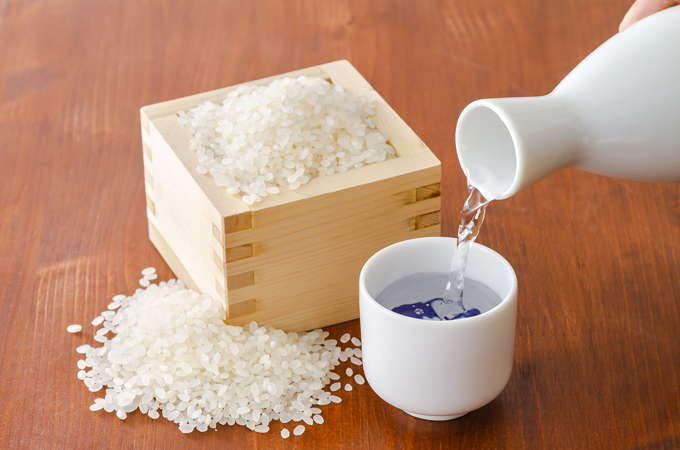As a member of the professional beverage community, I tend to be obsessive about spirits. I can be completely immersed in one particular product or style and sing its praises endlessly. I have been known to spend absurd amounts on watermelon beer, force-feed Malort to friends, and ruin my own birthday surprise by insisting that Umbrian Orange Wine is the only acceptable dinner beverage.
My newest obsession is sake. Recently, in the midst of a group session, I shared some sake facts, and based on the general reaction, one would have thought I’d placed a live scorpion on the table. So I’ve concluded we must give sake more attention.
Sake is unique because it goes through ‘multiple parallel fermentation,’ meaning it converts starch to sugar and sugar to alcohol all at once. It is the product of nearly ritualistic processes of milling, rinsing, soaking, steaming, molding, fermenting, stirring, fortifying and filtering rice grain. It is highly process-driven. Contrary to popular belief and practice, most sakes (and definitely high-quality ones) should not be served warm. And speaking of high-quality, here is my sake list, from lowest to highest (mostly due to the amount of polishing the rice goes through): Honjozo, Ginjo, Daiginjo (all with distillate added) and Junmai, Junmai Ginjo, Junmai Daiginjo (all without distillate added).
There are different styles: Nigori is cloudy, unfiltered and currently my favorite; Yamahai–Shikomi is a natural yeast sake; Simoto Moto has longer fermentation, requires manual stirring and has higher acidity; Shizuku–Shibori is elegant and filtered by drip method; Nama-zake is unpasteurized, lively and requires careful handling and refrigeration; Genshu is undiluted; and Taruzake is aged in wooden barrels. Now, I urge you, buy a great bottle (or five) and find out why I am so obsessed with sake!
try this with that: seaweed, carrot & ginger salad
1 package dried sea spaghetti*
2-inch knob of ginger, peeled and
julienned
3 carrots, peeled and julienned
¼ c. rice wine vinegar
1 T. caster sugar
1 cucumber, peeled, seeded and
julienned
½ c. peanuts, toasted and salted
1 large mango, peeled and
julienned
½ c. peanuts, toasted and salted
2 T. sesame seeds, toasted
2 t. lime juice
1 T. grapeseed oil
2 T. coriander leaves, chopped
¼ c. mint leaves, shredded
Salt
» Rinse the sea spaghetti in cold water, strain, cover generously with cold water and set aside for 30 minutes. » Bring a large pot of water to a boil.
» Drain the sea spaghetti and place in the boiling water with the ginger. Boil for two minutes. Add carrots, boil two minutes more. Drain and pat dry.
» Transfer the blanched vegetables to a large bowl and, while still hot, add the vinegar, sugar and 1 1/4 t. salt. » Mix and set aside to cool. Once cool, stir in remaining ingredients and serve.
* Sea Spaghetti is available in specialty health food stores.
[Jorie Taylor is a certified sommelier and the assistant bar manager at Cielo at the Four Seasons Hotel.]
